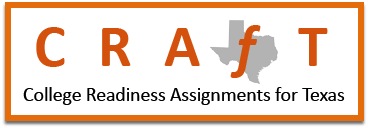IX. Earth and Space Sciences
![]() VIII. Physics X. Environmental Science
VIII. Physics X. Environmental Science![]()
A. Earth systems
1. Know the major features and characteristics of atmosphere, geosphere, hydrosphere, and biosphere.
a. Describe major components and interactions within the atmosphere: gas composition, temperatures at various levels, ozone formation, and breakdown. b. Describe characteristics that identify and distinguish the core, mantle, and crust, including their locations, compositions, interactions with each other, and changes through time.
c. Describe major components and interactions within the hydrosphere (the global ocean and its components).
d. Describe major components and interactions within the biosphere, including major biogeochemical cycles (e.g., carbon cycle, oxygen-water cycle, nitrogen cycle, sulfur cycle, flow and storage of energy).
2. Understand relationships and interactions among atmosphere, geosphere, hydrosphere, and biosphere.
a. Describe interactions between oceans and climate.
b. Describe effects of catastrophic events (e.g., volcanoes, earthquakes) on Earth systems.
c. Describe impacts of the oceans on the Earth system (e.g., how the Earth’s geologic history and present structure would have differed if the ocean had never formed).
d. Describe effects of biological activity on the atmosphere (e.g., CO2 levels, O2 levels).
e. Describe major effects of solar activity on the Earth’s atmosphere and hydrosphere, including climate, ocean circulation, ozone formation, etc.
3. Possess a scientific understanding of the history of Earth’s systems.
a. Describe methods and techniques for absolute and relative dating of geologic events and deposits.
b. Describe general features of the geological history of Earth, including generally-accepted dates and sequence of the geologic time scale, physical and chemical conditions prevailing on Earth at different times, and major extinction events among organisms during these time periods.
c. Explain how different surface processes (e.g., volcanism, erosion, tectonics, cratering) affect the planetary surface.
4. Utilize the tools scientists use to study and understand the Earth’s systems.
a. Use remote sensing tools (e.g., maps, visualizations, satellites, GPS/GIS, seismographs, weather balloons, buoys) and the data they provide.
B. Sun, Earth, and moon system
1. Understand interactions among the sun, Earth, and moon.
a. Describe solar system processes that produce phases of the moon, solar and lunar eclipses, seasons, and tides.
2. Possess a scientific understanding of the formation of the Earth and moon.
a. Describe current scientific theories and evidence for the origin of Earth and its moon.
C. Solar system
1. Describe the structure and motions of the solar system and its components.
a. Identify and describe the major components of the solar system (e.g., star, planets, comets, dwarf planets, kuiper objects, asteroids).
2. Possess a scientific understanding of the formation of the solar system.
a. Describe the formation of the sun and the evidence that supports our understanding of this process.
b. Explain the differences between the formation of rocky and gaseous planets.
D. Origin and structure of the universe
1. Understand scientific theories for the formation of the universe.
a. Describe current scientific theories and evidence for the origin of the universe (the Big Bang) and formation of galaxies (Red Shift observations).
b. Describe the life cycle of stars using the Hertzsprung-Russell diagram.
2. Know the current scientific descriptions of the components of the universe.
a. Describe types of galaxies and the characteristics that distinguish them.
b. Describe general features of quasars and pulsars and the characteristics that distinguish them.
E. Plate tectonics
1. Describe the evidence that supports the current theory of plate tectonics.
a. Describe general features of the Earth’s interior.
b. Describe the role of convection currents in plate motion.
2. Identify the major tectonic plates.
a. Locate and identify the major tectonic plates and plate boundaries on a map.
3. Describe the motions and interactions of tectonic plates.
a. Describe the geologic features that result from convergent, divergent, and transformed plate boundaries.
4. Describe the rock cycle and its products.
a. Identify common rocks and rock-forming minerals.
b. Classify and describe the formation of rocks (igneous, metamorphic, sedimentary).
F. Energy transfer within and among systems
1. Describe matter and energy transfer in the Earth’s systems.
a. Describe Earth’s principal sources of internal and external energy (e.g., radioactive decay, gravity, solar energy).
2. Give examples of effects of energy transfer within and among systems.
a. Describe energy sources and energy transfer processes (e.g., convection, conduction, radiation) that produce thunderstorms, hurricanes, tornadoes, and other weather events.
b. Provide examples of how the uneven heating of Earth influences global circulation patterns (e.g., currents, winds, weather).
c. Describe the effects of ocean currents on weather patterns.
d. Describe the effects of large impacts on geological structures and atmospheric conditions, and cite examples of evidence of large impacts in Earth’s history.


 Show Printable Version
Show Printable Version




